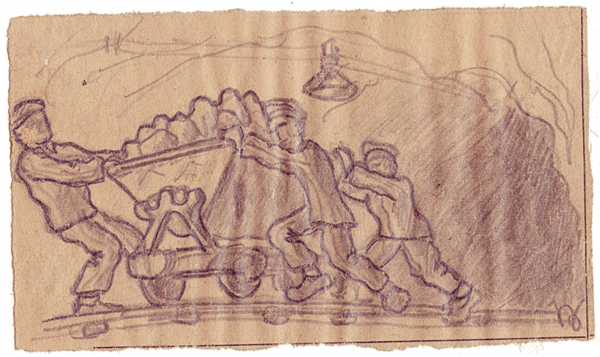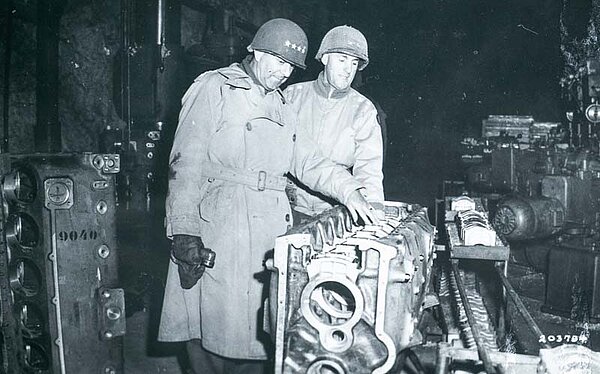"Goldfish" Historical Trail
Basic information
Opening Hours
The "Goldfish" historical trail is accessible to the public, and can be visited at any time.
The historical trail encompasses a loop of approximately 2,5km (1.6 miles). The underground gallery of the former "Goldfish" factory can not be entered.
The historical path is NOT located directly beside the Neckarelz Concentration Camp Memorial, but is located in Obrigheim, which is on the other side of the Neckar. (approx 5km/3 miles) away.
All important information, as well as a map for the loop can be found by clicking on visitor information.
Would you like to visit us with a group?
Wether you have a school class, youth group, or any other kind of group who is interested in visiting the memorial - we would be happy to welcome you as our guest. All important information pertaining to Group Tours have been put together on an extra page for you.
The trail
Underground Armaments Factory
The story of an underground Armament Factory
Hidden behind the code name "Goldfish" was nothing less then the relocated Daimler-Benz engine plant - from Berlin Ludwigsfelde/Brandenburg to the Neckar. In 1944, the mechanical assembly of the largest German airplane engine factory was rebuilt almost completely underground in the gypsum mine in Obrigheim.
Concentration camp prisoners were used for the construction work. Free workers, predominantly foreign workers from many different countries were used for the production of the engines. In total, "Goldfish" engaged approximately 10,000 people.
After the occupation by the American troops, the gypsum mine was returned. The mine is still used today to extract gypsum for the production of concrete and cement.
Concentration Camp Prisoners as Workers

Beginning in the middle of March 1944, the concentration camp prisoners worked day and night. They worked in two shifts under miserable conditions - being beaten, poorly nourished and not properly clothed. They had to set up the construction site, free the corridors inside the mine from mud and boulders, and pour concrete over an area of 50,000 square meters. Outside the gallery, they were required to set up more buildings and facilities.
On June 26, 1944 the first machines from Genshagen arrived by train. At the same time, the workers arrived. Overall, almost 5,000 "Loyal Workers" (free workers and "foreign workers" - including women) poured into the region. They lived mostly in barracks, and were treated a little better than the concentration camp prisoners. All in all, "Goldfish" "employed" 10,000 people.
In October 1944, the first engines were delivered. The monthly quota of 1,000 units was never reached. Problems receiving new supplies, and bomb attacks caused the production to come to a halt in February 1945. Beginning in the middle of March, the workers were "sent off".
From Liberation to Normality

On April 2, 1945, American Troops occupied the Neckar Valley, and immediately investigated the underground factory.
After the war, the seized gypsum mine was returned to the Portland Cement Company. To date gypsum is still mined in the hills on the banks of the Neckar.


